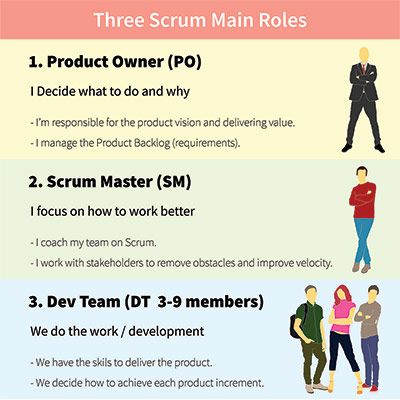
If you have a job in software development – or maybe even if you don't — you've probably heard the word scrum used to describe the way teams get things done. Scrum is a project management methodology used in many industries, but primarily in software development. The scrum master is the facilitator of the scrum methodology. The scrum method values teams making their own decisions on the best ways to achieve their goals and breaking projects down into small deliverables.
You might have also heard about agile software development. Scrum and agile overlap but are not the same. Scrum is one of the most popular agile frameworks, or processes to do work according to agile principles.
Advertisement
So, what are agile principles? The Agile Manifesto was born in February 2001 at a meeting of software developers looking for a better way to manage their work without getting mired in complex processes and missing deadlines. The Agile Manifesto states that its creators value:
- individuals and interactions over processes and tools
- working software over comprehensive documentation
- customer collaboration over contract negotiation
- responding to change over following a plan
Each phrase has two parts. Scrum principles emphasize the left side of each phrase (individuals and interactions) over the right (processes and tools). They're both important, but the left half is more important. With its focus on creating finished projects that customers want to use, agile project management methodology has become very popular, particularly in tech industries.
The Scrum Guide recommends that teams be no larger than 10 members, with no sub-teams. Team members are responsible for creating their own path to the goal, and for getting the work done by its deadline. Large projects are divided into smaller parts, each with its own deadline to ensure the work gets done on time.
The core measurement for scrum teams is the sprint. Sprints are segments of time in which the team concentrates on specific tasks, no longer than a month. Anything longer may cause the sprint's scope to creep. Team members concentrate on getting a sprint finished, then take a look at what's next.
Individual team members learn by experience. At the end of each work segment, the team looks back to evaluate its performance. Along the way the team meets regularly to make sure everyone is doing what they are supposed to, and everything gets done on time.
Advertisement



